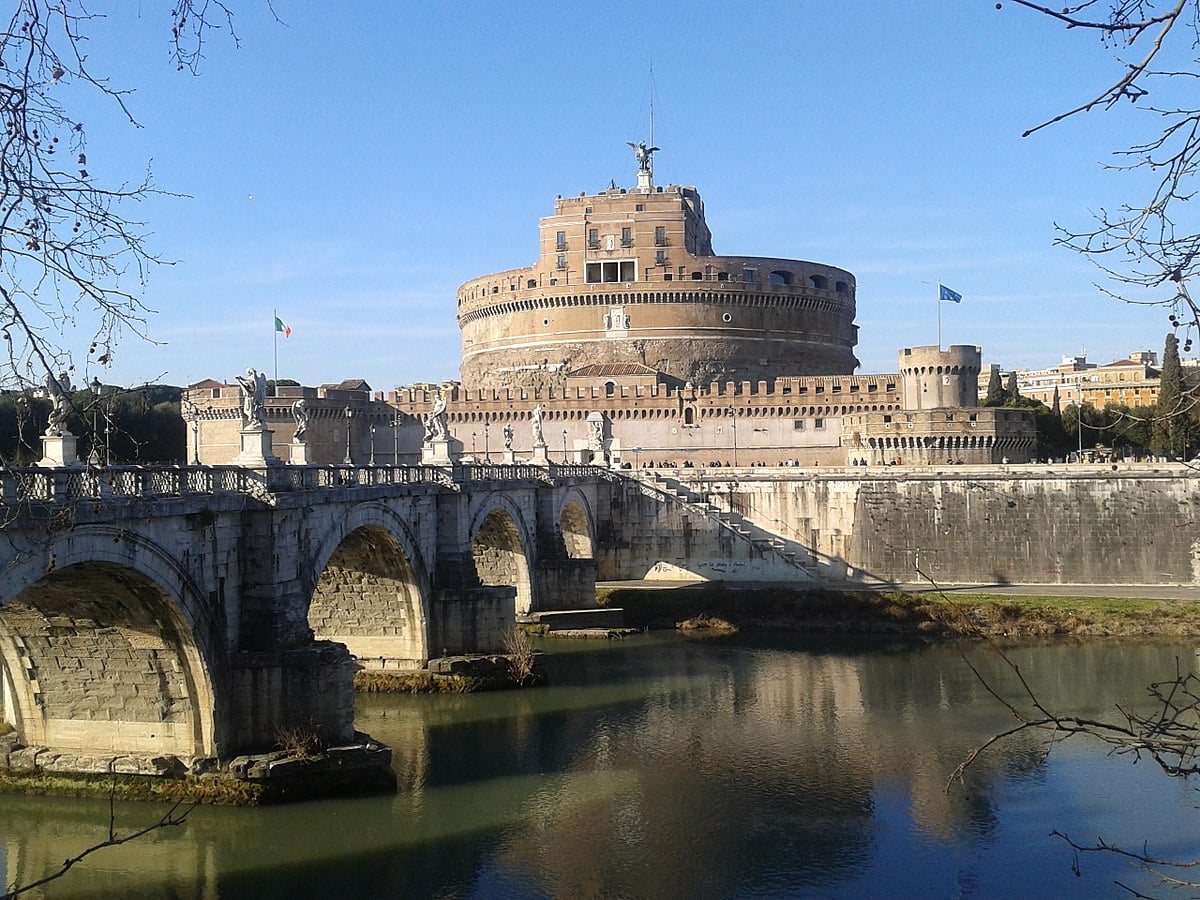
If you’re a history buff or simply fascinated by remarkable landmarks, then Castel Sant’Angelo in Rome is a must-visit destination. This iconic fortress has stood the test of time, witnessing centuries of events and playing a significant role in the history of the Eternal City. Not only does Castel Sant’Angelo boast a magnificent architectural design, but it also hides intriguing secrets and fascinating stories within its walls. From its origins as a mausoleum to its transformation into a papal stronghold, this fortress holds a wealth of unbelievable facts waiting to be discovered. In this article, we’ll delve into 13 mind-blowing facts about Castel Sant’Angelo that will leave you astounded and itching to explore this remarkable landmark for yourself.
Key Takeaways:
- Castel Sant’Angelo has a rich history as a mausoleum, fortress, and prison, and is now a museum. It’s a timeless symbol of Rome’s architectural marvels and a must-visit for history enthusiasts.
- The fortress has a secret passage, a stunning angel statue, and a picturesque bridge. It has also been featured in movies, making it a star in its own right.
The Mausoleum of Hadrian
Originally commissioned by Emperor Hadrian as a mausoleum for himself and his family, Castel Sant’Angelo was constructed in 123 AD. It stands as a testament to the grandeur of ancient Roman architecture.
A Fortress of Defense
In times of chaos and conflict, Castel Sant’Angelo served as a fortress, providing protection to both popes and the city of Rome. Its strategic location and fortified walls made it an impenetrable stronghold.
The Secret Passage
One of the most intriguing features of Castel Sant’Angelo is its secret passage, known as the Passetto di Borgo. This elevated corridor connected the fortress to the Vatican, allowing popes to escape in times of danger.
A Scene of Execution
During the Renaissance, Castel Sant’Angelo witnessed numerous executions, particularly during the infamous reign of Pope Alexander VI. The fortress became a grim reminder of the brutal power struggles of the time.
The Angel’s Statue
Perched at the top of Castel Sant’Angelo is a magnificent statue of an angel, designed by Flemish artist Peter Anton von Verschaffelt. This iconic sculpture gives the fortress its name and adds an ethereal touch to its silhouette.
The Castle’s Transformation
Over the centuries, Castel Sant’Angelo underwent several architectural transformations. From a mausoleum to a fortress, and later turning into a papal residence and a prison, it has adapted to the changing needs of different eras.
The Sant’Angelo Bridge
Connecting the city of Rome to Castel Sant’Angelo is the picturesque Sant’Angelo Bridge. Built in the 2nd century by Emperor Hadrian, it stands as a testament to Roman engineering and offers breathtaking views of the Tiber River.
The Treasure Trove
Castel Sant’Angelo houses a vast collection of art and artifacts. From ancient Roman sculptures to Renaissance paintings, the interior of the fortress is a treasure trove of history, offering visitors a glimpse into the past.
A Musical Retreat
Did you know that Castel Sant’Angelo once served as a musical retreat? During the Renaissance, it became a venue for lavish concerts and performances, entertaining both nobles and commoners with the enchanting melodies of the time.
The Prisoners of Castel Sant’Angelo
Throughout its history, the fortress was used as a prison for various prisoners of the Papal States. Notable figures like the Italian philosopher Giordano Bruno and the sculptor Benvenuto Cellini were held captive within its walls.
The Film Star
Castel Sant’Angelo has had its fair share of appearances on the silver screen. It has been featured in movies like “Angels & Demons” and “Roman Holiday,” adding to its allure and making it a star in its own right.
The National Museum
Today, Castel Sant’Angelo is home to the National Museum of Castel Sant’Angelo, showcasing its rich history and housing a collection of artworks, military memorabilia, and historical artifacts for visitors to explore.
The Eternal Icon
Steadfast through the passage of time, Castel Sant’Angelo stands as an eternal icon of Rome’s architectural marvels. Its majestic presence continues to captivate visitors and reminds us of the city’s rich and complex tapestry of history.
Embark on a journey through the centuries and discover the wonders of Castel Sant’Angelo. Immerse yourself in the stories, legends, and sheer magnificence of this remarkable landmark that has stood the test of time.
Conclusion
In conclusion, Castel Sant’Angelo is truly an astonishing landmark with a rich history and fascinating facts. From its origins as a mausoleum to its transformation into a fortress and later a museum, it continues to captivate visitors from around the world. Whether you are interested in Roman history, architectural marvels, or simply stunning panoramic views of Rome, Castel Sant’Angelo offers something for everyone. The legends, mysteries, and stories associated with this iconic landmark only add to its appeal, making it a must-visit destination for anyone traveling to Rome. So, don’t miss the opportunity to explore the secrets and marvels of this remarkable structure.
FAQs
Q: When was Castel Sant’Angelo built?
A: Castel Sant’Angelo was initially constructed as a mausoleum for the Roman Emperor Hadrian between 135 AD and 139 AD.
Q: Can visitors access the top of Castel Sant’Angelo?
A: Yes, visitors can climb to the top of Castel Sant’Angelo and enjoy the breathtaking views of Rome from the terraces.
Q: Is Castel Sant’Angelo open to the public?
A: Yes, Castel Sant’Angelo is open to the public and serves as a museum showcasing its storied history and the collections it houses.
Q: Are guided tours available at Castel Sant’Angelo?
A: Yes, guided tours are available at Castel Sant’Angelo, providing visitors with in-depth insights into the history and significance of the landmark.
Q: Are there any interesting legends associated with Castel Sant’Angelo?
A: Yes, Castel Sant’Angelo is steeped in legends, including stories of ghosts, secret passageways, and the presence of heavenly angels protecting the structure.
Q: What can I expect to see inside Castel Sant’Angelo?
A: Inside Castel Sant’Angelo, you can explore ancient Roman artifacts, medieval weaponry, Renaissance-era paintings, and breathtaking frescoes.
Q: How long does it take to visit Castel Sant’Angelo?
A: The average visit to Castel Sant’Angelo takes approximately 1 to 2 hours, depending on your level of interest and exploration.
Castel Sant'Angelo's rich history captivates visitors, but there's more to explore in the world of fascinating landmarks and architecture. Uncover the secrets of historic landmarks in Binghamton, New York, where stories of the past come alive. Marvel at the breathtaking Renaissance architecture of the Sistine Chapel, a testament to human creativity and spirituality. For those seeking adventure, Machu Picchu beckons as a mysterious and awe-inspiring tourist attraction, inviting you to step into the realm of the extraordinary.
Was this page helpful?
Our commitment to delivering trustworthy and engaging content is at the heart of what we do. Each fact on our site is contributed by real users like you, bringing a wealth of diverse insights and information. To ensure the highest standards of accuracy and reliability, our dedicated editors meticulously review each submission. This process guarantees that the facts we share are not only fascinating but also credible. Trust in our commitment to quality and authenticity as you explore and learn with us.


